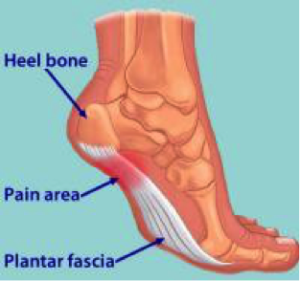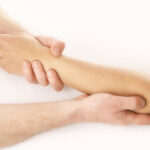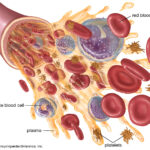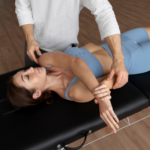Foot facts!
- When walking, each time your heel lifts off the ground it forces the toes to carry one half of your body weight.
- A human foot & ankle is a strong, mechanical structure that contain 26 bones, 33 joints, and more than 100 muscles, tendons & ligaments.
- The average person will walk around 115,000 miles in a life time, that’s more than four times around the earth! The average person takes 8,000 to 10,000 steps a day.
- 1/4 of all the bones in the human body are down in your feet. When these bones are out of alignment, so is the rest of the body.
- 75% of Americans will experience foot problems at one time or another in their lives.
Plantar Fasciitis, what is it?
Plantar Fasciitis (PF) is a common foot problem that can cause pain in the arch or heel of the foot. The pain is from inflammation of a band of tissue that runs along the bottom of the foot from the heel to the toes. When the tissue becomes too tight, micro tears may happen, which cause inflammation. It is usually caused by overuse and can happen to anyone that does a lot of standing, walking, running, or by not wearing correct and supportive footwear. People with very tight calves, high arches or flat feet are also prone to getting this condition. The pain can range from a dull ache to a sharp pain with certain movements and it usually worse upon moving after a period of inactivity; such as the first steps in the morning or after sitting for a while.
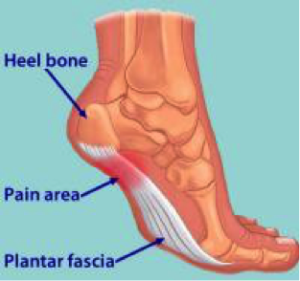
What to do about it?
If left untreated, PF can become chronic and a lingering and persistent problem. But there are things you can do to help your foot heal.
- Limit the amount of time on your affected foot.
- Ice the bottom of your foot for up to 20 min at a time. You can freeze a disposable water bottle and roll your foot back and forth on it.
- Use a tennis, lacrosse or baseball to roll your foot out on.
- Self massage to the bottom of the foot.
- Shoe orthotics with arch support.
- Kinesiotape on the foot (Edited to add by Phila Massages (2017): there is limited scientific evidence supporting the use of kinesiotape, see this article for more information).
- Night splint that stretches the calf and arch of the foot while sleeping.
- Anti-inflammatories such as Advil.
- Massage therapy and Physical therapy
Once the initial inflammation has subsided, stretching the foot, calf muscles and Achilles can be helpful. See stretches below:
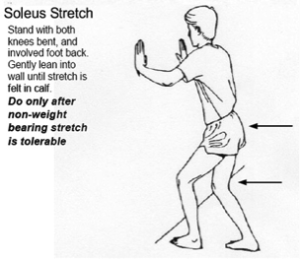
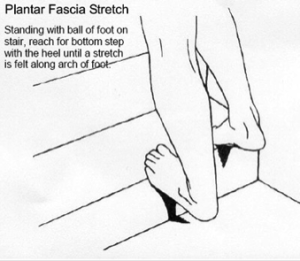
If these conservative methods don’t help or the symptoms return, a doctor may recommend other options.
References
- http://www.nuestep.com/15-interestingweird-foot-facts-find/
- http://www.aofas.org/footcaremd/conditions/ailments-of-the-heel/Pages/Plantar-Fasciitis.aspx/
- http://www.mayoclinic.org/diseases-conditions/plantar-fasciitis/basics/definition/con-20025664
This article/video is for educational purposes only; do not attempt without your physician’s clearance. If you are in pain or injured, see your physician.
Copyright © Vidal Sports LLC 2018




